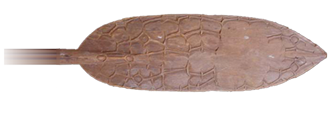

Partnership Template v0.3
Subversion, Conversion, Development
Public Interests in Technologies. Partnership featured at Centre for Research in the Arts, Social Sciences and Humanities (CRASSH), Cambridge University, 24-26 April 2008. More...
Connected Knowledge
Collaboration Across BoundariesBanff New Media Institute, 26-29 July 2007. More...
Learn more about the Partnership's series of international conferences, or explore other aspects of the project via the menus above.
The Cross-Cultural Partnership project is made possible with generous support from the Rockefeller Foundation.
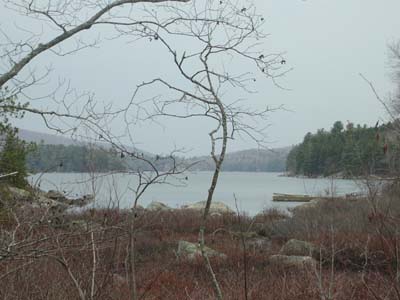 Sustainability may be a common catchphrase among environmentalists, but it applies to ecologies of all kinds, not just the biological ones. Cultural producers need creative ecologies to thrive, yet in practice exclusive markets often exploit the creators who feed them products to sell, whether they are painters trying to break into the gallery scene or musicians trying to land a recording contract.
Sustainability may be a common catchphrase among environmentalists, but it applies to ecologies of all kinds, not just the biological ones. Cultural producers need creative ecologies to thrive, yet in practice exclusive markets often exploit the creators who feed them products to sell, whether they are painters trying to break into the gallery scene or musicians trying to land a recording contract.
While the Internet provides new ways to collaborate outside of the usual business model, online relationships are not known for their sustainability, and many community Web sites disappear or wither due to a lack of sustained dialogue or connection among their participants. By contrast, one of the essential features of partnership is a desire among the Partners to forge a relationship that endures beyond the hit-and-run transactions of market economies and most online social networks.
Furthermore, true long-term sustainability requires accountability beyond the individual partners themselves to the broader goal of nurturing cultural and natural diversity. Hence the goal of this working group is to investigate new structures that encourage persistent connections among people, their knowledge, the land, and all beings that sustain them.
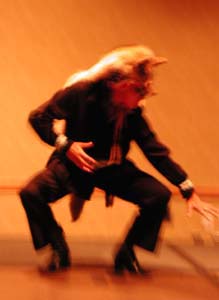 Creativity in the European tradition has generally meant the production of costly goods sold to elite connoisseurs. Yet artists in Europe and America have often turned to other cultures for inspiration, be it Gauguin learning from Tahiti islanders or Peter Gabriel borrowing drumming rhythms from East Africa. While rarely as explicit as these examples, many artistic movements in Euro-ethnic culture bear a deep debt the creativity of other cultures.
Creativity in the European tradition has generally meant the production of costly goods sold to elite connoisseurs. Yet artists in Europe and America have often turned to other cultures for inspiration, be it Gauguin learning from Tahiti islanders or Peter Gabriel borrowing drumming rhythms from East Africa. While rarely as explicit as these examples, many artistic movements in Euro-ethnic culture bear a deep debt the creativity of other cultures.
Fostering creativity that doesn't exploit or exoticize other cultures means connecting rather than detaching creators from each other. Models for this connected creation can be found in networks as diverse as the Malanggan sculpture of New Guinea and the open software development of GNU/Linux distributions. In these networks, the function of creative output is not to create objects, but to create new relations of kinship among people who make and behold them.
Research suggests that working cooperatively enhances learning, nourishes personal identity, and encourages empathetic responses to and awareness of others. This working group is dedicated to researching modes of creativity that build on these strengths.
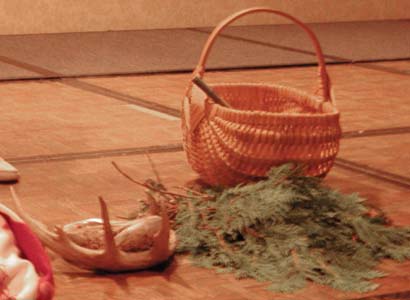 In today's world of globalized markets, filesharing networks, and outsourced labor, cultural producers from Paris to Papua New Guinea find their ability to sustain their livelihoods growing more and more precarious. Even those with a shot at financial success often wish there were another means to support their work outside of the dominant market economy increasingly fueled by military spending and corporate welfare.
In today's world of globalized markets, filesharing networks, and outsourced labor, cultural producers from Paris to Papua New Guinea find their ability to sustain their livelihoods growing more and more precarious. Even those with a shot at financial success often wish there were another means to support their work outside of the dominant market economy increasingly fueled by military spending and corporate welfare.
This working group explores alternative models of self- and community sustenance, based not on boundless growth and a profit motive but on much older and more proven engines of economic success. Today's explosion in peer-based creativity, from software design to wikis to remix culture, has reinforced what Native cultures already know: that cooperative economies require few resources to be remarkably productive.
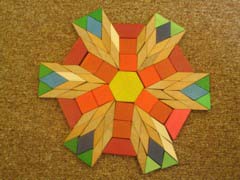 Along with a lack of faith in traditional monetary economies, many creators in Native and networked spaces are skeptical about the role traditional governments play in nourishing their work. Misunderstandings and broken promises from political leaders have sewn seeds of distrust among cultures based on ethical principles rather than the principles of greed and fear that seem to underlie much of Euro-ethnic law.
Along with a lack of faith in traditional monetary economies, many creators in Native and networked spaces are skeptical about the role traditional governments play in nourishing their work. Misunderstandings and broken promises from political leaders have sewn seeds of distrust among cultures based on ethical principles rather than the principles of greed and fear that seem to underlie much of Euro-ethnic law.
For this reason, we have designed the Cross-Cultural Partnership to encourage two parties to determine and abide by an ethical framework of their own choosing--a condition we refer to as sovereignty. To be sovereign, as Native Americans are, is to be in a position to "treat" directly with people from other cultures. "Sovereignty" is also a term encryption advocates use to champion the freedom of online speech. In both contexts, the assumption is that groups of persons may assume the powers of nations in that they can decide, on a case-by-case basis, the most equitable form of transaction available to them. This is in marked contrast to the logic of global capital, wherein corporations assume the rights and protections of persons.
The partnership template is hence a micro-treaty among sovereigns. Written to mesh with principles in Euro-American law, the template nevertheless encourages its Partners to submit to local sovereigns or arbitrators to resolve disputes. For examples please see the framework template.
The valiant efforts of the latter "copyfighters" has helped slow the encroachment of the electronic commons and encouraged millions of netizens to share their own art and artifacts. Nevertheless, while this strategy made sense in the 1990s when technological and economic networks had not completely encircled the planet, a libertarian approach no longer scales to the social and political diversities of today's globalized economy.
Preamble
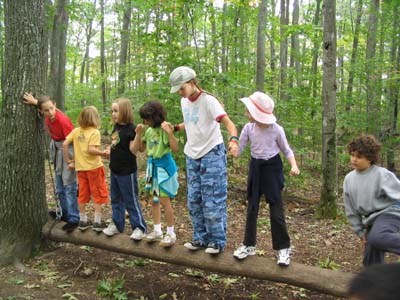 In many contexts people look to the law to establish or enforce a 'safe space' in which collaborative relationships may flourish. Good intention is more fundamental to establishing and sustaining relationships than law or codes of conduct. Nonetheless legal agreements and faith in the law often facilitate relationships where trust is not yet established.
In many contexts people look to the law to establish or enforce a 'safe space' in which collaborative relationships may flourish. Good intention is more fundamental to establishing and sustaining relationships than law or codes of conduct. Nonetheless legal agreements and faith in the law often facilitate relationships where trust is not yet established.
Here we offer a template: the result of long-term consideration of issues around collaboration in many contexts. The template draws specifically, and intentionally, upon understandings abstracted from both established social practices and licenses developed for digital creations. Experience points to the significance of considering and accommodating the expectations, interests, and location of parties to a collaboration.
Inspiration and Genealogy
Copyleft has built its alternative upon the scaffolding of copyright law to achieve goals outside of that law's usual bounds. For the exchange of knowledge and creative partnerships (including between indigenous peoples, corporations and institutions, different disciplinary actors, etc.) we draw upon frameworks from the area of the law pertaining to partnership.
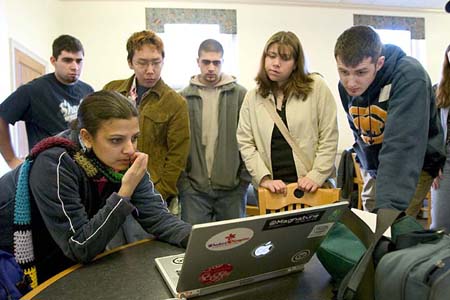 As in business dealings, choosing the partnership form brings with it default terms of fairness between partners: duties of loyalty, of care, of disclosure, of good faith and fair dealing. We seek to import those ethics and their underlying law to relationships broader than business, giving legal force to terms of mutual respect and mutually beneficial interchange.
As in business dealings, choosing the partnership form brings with it default terms of fairness between partners: duties of loyalty, of care, of disclosure, of good faith and fair dealing. We seek to import those ethics and their underlying law to relationships broader than business, giving legal force to terms of mutual respect and mutually beneficial interchange.
Although the Gnu GPL and Creative Commons licenses served as models, this template agreement is much more skeletal in form. That is because the core of the partnership relationship is parties jointly articulating their intentions and goals. The process of specifying terms in this agreement can be an important part of building the shared understanding that will assist the relationship to achieve mutually agreeable ends.
It is in this spirit we offer a template for a partnership agreement by which the parties can make explicit to one another their understanding of shared goals, the means to achieve them, and have confidence that in that articulation, they guarantee a level of accountability from their partners.
 For example, imagine that Pfizer pharmaceuticals wants to patent medicinal plants discovered by the Yanomami People of Brazil. According to existing legal and commercial precedent, representatives of the drug company would offer the indigenous people two unsatisfactory options:
For example, imagine that Pfizer pharmaceuticals wants to patent medicinal plants discovered by the Yanomami People of Brazil. According to existing legal and commercial precedent, representatives of the drug company would offer the indigenous people two unsatisfactory options:
- Surrender any claim of intellectual property over these plants, allowing Pfizer to patent and profit from them without hindrance.
- Cast aside their traditional understanding of the plants in favor of a WIPO-approved intellectual property regime for these cultural artifacts, from forming a holding corporation to secure patents to allowing what may be considered sacred herbs to be shipped and regrown overseas.
Neither solution respects the cultural norms of the Yanomami, for whom the concept of "property" may be nonexistent or superceded by more important ethical customs governing the use of these artifacts.
In the nuanced world of indigenous cultural production, information does not necessarily want to be free, but it may require care. When designed and followed in good faith, a partnership between the Yanomami and Pfizer (or perhaps more naturally UNESCO or Physiciens sans frontiers) can ensure that the medicines are shared with the world in a way that respects and rewards indigenous knowledge according to its own ethical principles.
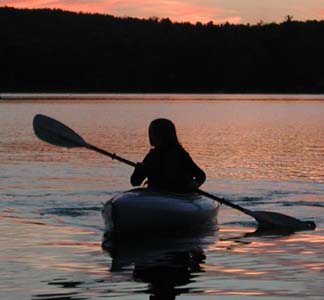 Native peoples face a dilemma of how far to encourage the borrowing, reinterpretation, or commercialization of their heritage. It's a dilemma the Wabanaki of the American east coast face when deciding whether to permit chants to be remixed into new-age music; the Warlpiri of Australia face it when deciding whether to allow motifs from their songlines to be incorporated into acrylic fine-art paintings.
Native peoples face a dilemma of how far to encourage the borrowing, reinterpretation, or commercialization of their heritage. It's a dilemma the Wabanaki of the American east coast face when deciding whether to permit chants to be remixed into new-age music; the Warlpiri of Australia face it when deciding whether to allow motifs from their songlines to be incorporated into acrylic fine-art paintings.
A partnership can dictate the terms of such artistic re-use, to ensure any sacred emblems or motifs are used respectfully and with the measure and type of compensation appropriate for that culture.
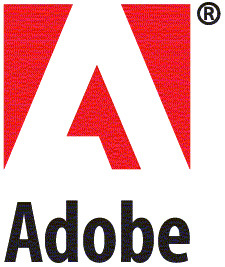 Many artists would jump at the chance to work with industry researchers given their technical expertise and equipment budgets. Yet the history of such collaborations has been a checkered one; even the most successful models, such as the artist residencies at Bell Labs and Xerox Parc, were eventually discontinued. Art created in research labs can easily devolve into aestheticized interfaces--ie, window dressing for science or engineering. And the two parties may have very different priorities for such collaborations--a scientist may want a patent while an artist wants an exhibition.
Many artists would jump at the chance to work with industry researchers given their technical expertise and equipment budgets. Yet the history of such collaborations has been a checkered one; even the most successful models, such as the artist residencies at Bell Labs and Xerox Parc, were eventually discontinued. Art created in research labs can easily devolve into aestheticized interfaces--ie, window dressing for science or engineering. And the two parties may have very different priorities for such collaborations--a scientist may want a patent while an artist wants an exhibition.
Despite the many factors that make such collaborations difficult, one way to bridge that divide is via a Cross-Cultural Partnership agreement. Artists and scientists tend to have different definitions of and expectations for originality, relevance, and closure; a partnership could spell out these differences while nevertheless setting forth common aims.
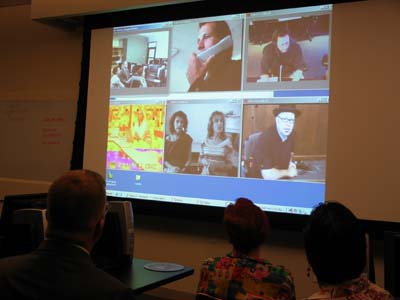 Curiously, an analogous dilemma attends digital creators who wish to share their works but not become disconnected from them. Suppose a young musician creates an mp3 file she would like to share with the world. Should she choose to reserve all rights under traditional copyright, there is very little chance that anyone will ever hear it unless she gets promoted by a major record label. On the other hand, if she applies a Creative Commons license that allows others to use a soundtrack to their video or sample it to create their own audio remix, there is currently no mechanism for her to discover or base relationships on such instances of re-use.
Curiously, an analogous dilemma attends digital creators who wish to share their works but not become disconnected from them. Suppose a young musician creates an mp3 file she would like to share with the world. Should she choose to reserve all rights under traditional copyright, there is very little chance that anyone will ever hear it unless she gets promoted by a major record label. On the other hand, if she applies a Creative Commons license that allows others to use a soundtrack to their video or sample it to create their own audio remix, there is currently no mechanism for her to discover or base relationships on such instances of re-use.
The same lost opportunity attends a programmer who posts JavaScript licensed under the GPL; at 100 million Web pages and counting, the Internet is a haystack too large even for Google to find such needles--not to mention form a community from them. Furthermore, the GPL says nothing about the additional structures necessary to foster trust among programmers working together on an open software project. Because its code is open for all to see, anyone may start their own version of the GNU/Linux operating system, but only trusted members of the Debian community can rewrite key modules of the Debian distribution of GNU/Linux.
The first three generations of open license have emphasized a social dynamic of detachment rather than connection. This "free-for-all" ethic may have been useful for the early Internet, but it does not serve the long-term sustainability of artistic and electronic networks, which rely on meaningful social ties rather than hit-and-run mashups.
The Open Art Network is investigating open licenses that are less restrictive than partnerships in that some rights are given by default, in a manner analogous to Creative Commons' licenses. Unlike CC licenses, however, the Open Art Network's "registration license" encourages connection by tracking the genealogy of creation, thus fostering the human ties that characterize creativity in Native contexts.
Representatives of more than a dozen nations have participated in Connected Knowledge conferences and other events organized as part of the Cross-Cultural Partnership project.

You can learn more about the participants' interests and event themes at the Connected Knowledge home page.
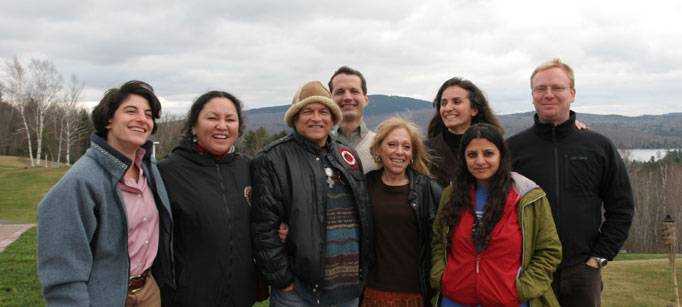 The first draft of the partnership framework emerged from a four-day intensive discussion among participants in the November 2006 Lucerne conference.
The first draft of the partnership framework emerged from a four-day intensive discussion among participants in the November 2006 Lucerne conference.
The ethical basis of the partnership owes a debt to Miigam'agan of the Micmac and Charlene Francis of the Penobscot, who emphasized the importance of intention in their own communities and in any future agreements. Wendy Seltzer proposed hacking the legal definition of partnership to provide an ethical basis amenable to American law, and drafted the Preamble and Inspiration & Genealogy sections. James Leach collaborated with Wendy on much of the first template and proposed applying the partnership to a broader context, from anthropology in Native villages to digital artists in industry residencies. Neeru Paharia offered insights from her background in economics and as the director of Creative Commons.
The Cross-Cultural Partnership working group is organized by gkisedtanamoogk of the Wampanoag Nation, Miigam'agan of the Micmac Nation, and Joline Blais and Jon Ippolito of Still Water for network art and culture, a research arm of the University of Maine's New Media Department.
The watermark from the contexts section pictures Gina Brooks as Muskap from the Wabanaki Transformers production of Passamaquoddy Creation Myths: Honoring Mother Earth, Vera Francis, Creative Director.
The project is made possible with generous support from the Rockefeller Foundation.
The Web site was created by Still Water for network art and culture.
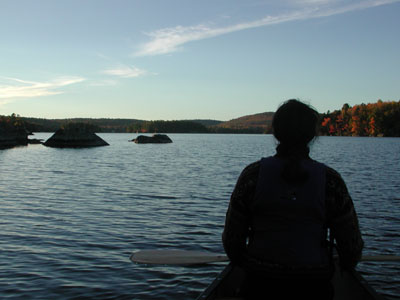 The Cross-Cultural Partnership working group is organized by Still Water for network art and culture, a research arm of the University of Maine's New Media Department.
The Cross-Cultural Partnership working group is organized by Still Water for network art and culture, a research arm of the University of Maine's New Media Department.
Please contact us via email at ude.eniam.timu@erutluc.loop or snailmail at:
Joline Blais and Jon Ippolito
Assistant Professors of New Media
Co-directors, Still Water for network art and culture
The University of Maine
5713 Chadbourne Hall
Orono, ME 04469-5713
tel +1 207 581-4477
fax +1 207 581-4357

